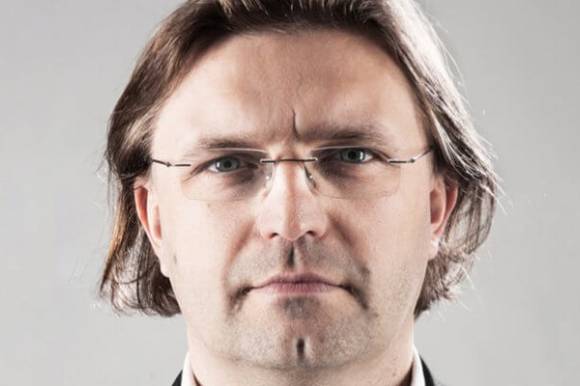 FNE: How do you assess the possibilities of the Polish production market today, after the experience of the COVID-19 pandemic?
FNE: How do you assess the possibilities of the Polish production market today, after the experience of the COVID-19 pandemic?
Kamil Przełęcki: Every crisis situation - a war, pandemic, plague - in the history of mankind has caused winners and losers to emerge. Likewise now, in the post-pandemic audiovisual production market, we can distinguish groups that are beneficiaries of the new state, and those that have certainly lost due to the change of environment that has followed. If we focus on feature film producers who have to adapt in the post-pandemic times, the major shift is that nowadays it is much harder to find willing investors. There is no comparison to the production boom we experienced in 2019. This is mainly due to the fact that since the market is unstable it is more difficult to provide potential investors with hard data that would prove that the project will be successful. Even if we adopt healthy rules regarding the genre, the use of popular actors, the topicality of the topic, as well as possess the so-called track record - these are the parameters which worked before the pandemic - we have to say: the rules of the game have changed, because people's habits in consuming films have changed. This doesn’t necessarily mean that production companies are in a much worse situation, because a gigantic market has been created during the pandemic, which will keep growing. I’m referring here not only to VOD brands, but to brands in the sense of media conglomerates that have linear and cable TVs in their resources, and also VOD services. Big players such as Disney, HBO, Warner, Netflix, and of course, Amazon, as well as, in the longer term, probably also Google, Microsoft or Apple, will be interested in the content creation market and, above all, in their distribution, thus they will be interested in a competitive fight. This causes a natural phenomenon on the market: the more money there is on the market, the more productions are outsourced for television, mainly for TV and VOD, and this increases salary expectations. So, productions are getting more and more expensive, which is also influenced by inflation, as larger budgets are influencing the market, and here is more demand.
FNE: Does this mean that the cost of producing locally has increased?
Kamil Przełęcki: Today, feature films, excluding costume, historic dramas, cost 7-8 million PLN, and if you add promotion and the costs of distribution, often even 10 million PLN. To balance that 10 million PLN in today's reality you need 1.5-1.8 million viewers. Maybe even 3 million viewers. However, currently this situation does not make business sense. The rising costs of production are not balanced by a slightly declining or steady ticket price considering the much, much lower turnout. It's not just the films - it's just that the economy across the country is suffering from rising prices and this, consequently, results in the rising cost of film production. The main problem is that, in cinema, the revenues per film are not growing, so we can have blockbusters making great income and smaller films with not so good results. For those producers who produce for the big screen, who privately invest in cinema production, the situation is much, much worse, and I think that we will be able count on the fingers of one hand the cases in the next 2-3 years when a domestic production is able to exceed a million admissions, not to mention more. But it is not just that a vacuum has been created. In a sense, some of this lost revenue and lost audience is compensated by companies in other fields of exploitation, like VOD. The investment dynamics is growing, and we see new players on the market who are able to invest amounts that can cover at least part, if not the whole difference that results from the shortage of cinema audiences.
FNE: Has the pandemic influenced what will be popular in cinemas?
Kamil Przełęcki: This fall James Bond became a major success, but we all know this is cinema as a spectacle. I think that we will register attendance in the multiplex cinemas, regardless of whether the pandemic situation allows it. However, assuming that there are no obstacles here, this audience will continue to return to the cinema, maybe not this year, but maybe next year, maybe in two years, although it will have a very different structure. There will be people who go to the cinema less often and probably choose a different repertoire, such as blockbusters and global premieres. I think the audience of Polish productions will rather move towards VOD services. I would very much like to be wrong here. It's just that it seems to me that the pandemic has resulted in more people in certain age groups being actively involved in this digital revolution, having, inevitably, begun to use these digital goods through lockdowns, even if they hadn’t been consumers before.
FNE: What about the genres popular in film production? Has COVID-19 influenced that?
Kamil Przełęcki: I will have to divide it into two planes – cinema and VOD. There are new young creators, directors, producers, especially those who have been educated over the last 8 or 10 years. I taught them myself, so I can see how they are functioning perfectly on the market at the moment. These are people, both those who produce and create content, who grew up on very good models of generational series. That is the effect of what HBO and ABC introduced at the beginning of the century, and even earlier, because some projects came out in the ‘90s, like Twin Peaks or The Sopranos. The whole wave of cinematic series, completely different from other TV series content, shows that we can be inspired by what is being created in the world; we can create completely new content for generations of young viewers who are maturing today, i.e. 20- or 30-year-olds who want entertainment, and maybe not necessarily historical martyrdom. Because as creators, I think we have coped brilliantly to adapt the language to the new circumstances. It's just that it is happening in the area of TV series and it is happening in the area of production for VOD markets. I would very much like to avoid specifying that this is a B market, a market that is less trendy, because it is not, and excellent projects are created that have their own quality. Indeed, any production trends are certainly easier to spot on VOD services. There are many more projects bordering on surrealism, a hint of futurism, primarily cross-genre, which escape such simple genre divisions. We easily reach for fantasy, time travel, alternative stories and this is definitely a sign of the times and the influence of big brands that have developed this new formula. But when it comes to films, I think it's a bit too early for that. Nowadays, we still see films that were initiated before the pandemic, productions you thought would be made in 2019, decisions which were made in early 2020, when shooting was interrupted or continued between lockdowns. They are just emerging at the moment. Of the many projects that have been invented during the pandemic - even if there are several, it is difficult to talk about any trends. We will see what the future brings.



















